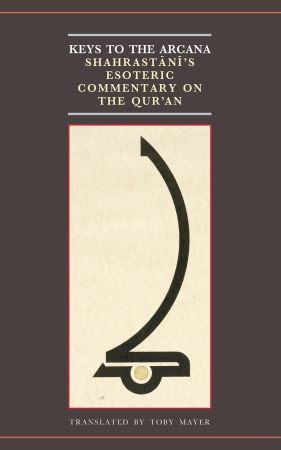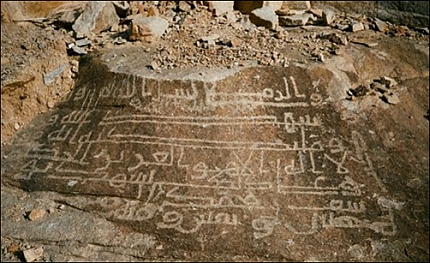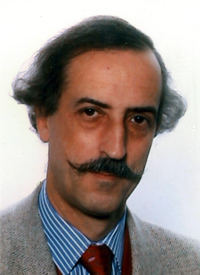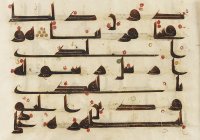A review of A.J. Droge, The Qur’an: A New Annotated Translation
By Ayman Ibrahim
One of the major goals of IQSA is to encourage research, discussion, and scholarship on the Qur’an and its literary features and historical formation. Arthur Droge’s The Qur’ān: A New Annotated Translation is a very positive contribution to the growing research on Islam’s scripture, particularly with regards to translating its meanings. Successfully placing his work within serious scholarly studies, Droge is to be congratulated and commended for his critical annotated translation, and its detailed, articulate, and thorough investigation. He “aims not at elegance but strives for as literal a rendering of the Arabic as English will allow” (xxxv). He is interested not only in the scholarly theories and methods surrounding the interpretation of the Qur’an but also in its relationship to pre-Qur’anic texts. Droge is evidently knowledgeable of and comfortable with the texts of the Hebrew Bible and New Testament, as well as the interacting discourses of the Qur’an with them. Moreover, he demonstrates great awareness and familiarity with other earlier translations of the Qur’an by Muslims (Pickthall, Yusuf Ali, and Abdel Haleem) and non-Muslims (Bell and Arberry) (xxii, xxvi).
 Methodologically, the author adopts and builds upon earlier studies, such as those of Daniel Madigan’s The Qur’ān Self Image and Gabriel Reynolds’s The Qur’ān in its Biblical Subtext, by attempting to understand the Qur’an on its own terms, setting “the traditional story of Islamic origins aside” (xiii). Droge acknowledges that this approach in dealing with the Qur’an is not the most common, as “both religious and secular scholars are committed to the view that the Qur’an corresponds to the career of Muḥammad” (xi). However, he convincingly argues for his approach, affirming that the Qur’an does not demand the reader to distinguish between different chronological periods or geographical places to understand the text (xi-xii). It is obvious that Droge does not seek controversy, as he shows restraint in the questions he asks (xiv), and the claims he makes (xxvi, xxxii). Yet he still supports his choice of such a critical approach, as he affirms that: “reverence may be a religious virtue, but it should not be a scholarly one” (xiii). Adopting such an approach does not mean that he dismisses tradition altogether. Throughout his analysis, he refers and reflects on the tradition for comparison and contrasts, without “letting tradition (sīra and tafsīr) fill in the gaps or predetermine the meaning of the [Qur’anic] text” (xxxvi).
Methodologically, the author adopts and builds upon earlier studies, such as those of Daniel Madigan’s The Qur’ān Self Image and Gabriel Reynolds’s The Qur’ān in its Biblical Subtext, by attempting to understand the Qur’an on its own terms, setting “the traditional story of Islamic origins aside” (xiii). Droge acknowledges that this approach in dealing with the Qur’an is not the most common, as “both religious and secular scholars are committed to the view that the Qur’an corresponds to the career of Muḥammad” (xi). However, he convincingly argues for his approach, affirming that the Qur’an does not demand the reader to distinguish between different chronological periods or geographical places to understand the text (xi-xii). It is obvious that Droge does not seek controversy, as he shows restraint in the questions he asks (xiv), and the claims he makes (xxvi, xxxii). Yet he still supports his choice of such a critical approach, as he affirms that: “reverence may be a religious virtue, but it should not be a scholarly one” (xiii). Adopting such an approach does not mean that he dismisses tradition altogether. Throughout his analysis, he refers and reflects on the tradition for comparison and contrasts, without “letting tradition (sīra and tafsīr) fill in the gaps or predetermine the meaning of the [Qur’anic] text” (xxxvi).
In his attempt to adhere to the literal English rendition of the Arabic text, Droge demonstrates competency, as he provides impressive word choices. Two examples will make my point here. First, consider Surat ‘Āl ʿImrān (Q 3:49), especially the part of the verse which reads annī akhluq lakum. Yusuf Ali and Abdel Haleem render the verb akhluq as “make,” while Pickthall and Sher Ali as “fashion,” and Hilali-Khan as “design.” For no obvious reason they seem to refrain from rending the verb as “create,” although two verses earlier (Q 3:47) they render yakhluq as “creates.” Droge chooses the correct literal English rendition: create. In his word choice, he is not only accurate but also consistent, as he renders this same verb root similarly throughout the text (e.g. compare Q 2:21, 29, 164, 228). Second, consider the word al-ṭāghūt, which perplexes translators. Although the Qur’an clearly links it with al-shayṭān in (Q 4:76), Pickthall renders it “idols,” Yusuf Ali “Evil,” Khalifa “tyranny,” and Abdel Haleem, “an unjust cause.” Droge keeps it in the text as al-ṭāghūt, and offers adequate explanations in footnotes, referring to its other occurrences and suggesting a textual meaning (Q 2:256, 257; 4:51, 60, 76; 5:60; 16:36; 39:17). While he affirms that the word could be merely another name for al-shayṭān, he still explains the semantic range of the word, referring to a possible related word in Ethiopic, holding tight to a literal rendition, as much as English allows. This is an excellent choice by Droge. It is noteworthy to mention, however, that unlike al-ṭāghūt, he treats the word fitna differently (e.g. Q 2:191, 193, 217; 8:39, 73; 9:47, 48, 49). Acknowledging its apparent various meanings, he translates it within the text, using different words (persecution, trouble, discord), depending on the text. He offers an explanation for his word choice in a footnote. While in both cases of al-ṭāghūt and fitna he is faithful to the apparent meaning of the word, as he strives for the literal rendering, it seems that his treatment of al-ṭāghūt (keeping it without translation within the text) is a bit better than that of fitna (translating it differently in the various passages throughout the Qur’an).
The translation is very attractive, and one of its major strengths lies in its extensive reliance on references and explanations—the entire text is annotated in a meticulous and detailed way. Moreover, the Index (461-488) is one of the features of the book that students and teachers may find very helpful. While Droge lists important works on the Qur’an in his “Guide to Further Reading” (xxxix-xli), it would make the translation even more helpful to readers if there were some indications of important and relevant secondary studies when appropriate and needed, especially after specific explanations offered in the footnotes. For instance, in sūrat al-Baqara (Q 2:30; footnote #38), after explaining the word khalīfa, it would be helpful to refer to some scholarly works that treat such an important word; similarly, Q 2:106, footnote # 130, and so forth. Obviously, this would make the volume a bit larger in size, yet it would definitely add to its great value for students.
There are very few typographical errors. The word wādi should be wādī (xvi), al-Ṭīn should be al-Tīn in Sura 95, and the name of the prophet Hūd is erroneously written Ḥūd throughout the text (with a ḥā’ as the first letter, instead of hā’). It is a pleasant relief to know that these minor errors have been corrected in the upcoming second printing, which will be released before the summer of 2014, according to the author. Moreover, some of Droge’s word choices need more explanation. Consider the word ḥaṣab in Surat al-Anbiyā’ (Q 21:98). The author renders it “coals,” but there is no stated explanation regarding this decision. There should be an annotation here, at least a brief note indicating the nature of his rendition. The same goes for umma in (Q 12:45), abbān in (Q 80:31), and so forth. It is understandable that Droge works with the standard Cairo Arabic (uncritical) text of the Qur’an. It will be interesting to see if future translations of the Qur’an explore the possibilities raised by emendations to that text. However, these minor causes for critique do not undermine the exceptional effort done in this valuable translation. They are understandable in a work of this size, especially in its first edition.
This translation is an excellent one. I have already assigned it in my class, “Islamic Texts: Qur’ān and Ḥadīth.” Droge’s work provides the field of Qur’anic Studies with a rich and meticulously researched translation that is particularly appropriate at a time when interest in the Qur’an is growing. The field of Qur’anic Studies is in need of rigorous academic scholarship more than ever, and Droge’s translation of the Qur’an provides just that.
© International Qur’anic Studies Association, 2014. All rights reserved.




 Just for some background information for our readers, what is current your position in Paris?
Just for some background information for our readers, what is current your position in Paris?![By Franciszek Meninski (1623-1698) [Public domain], via Wikimedia Commons](https://beta.iqsaweb.org/wp-content/uploads/2023/06/onomasticum.jpg)




